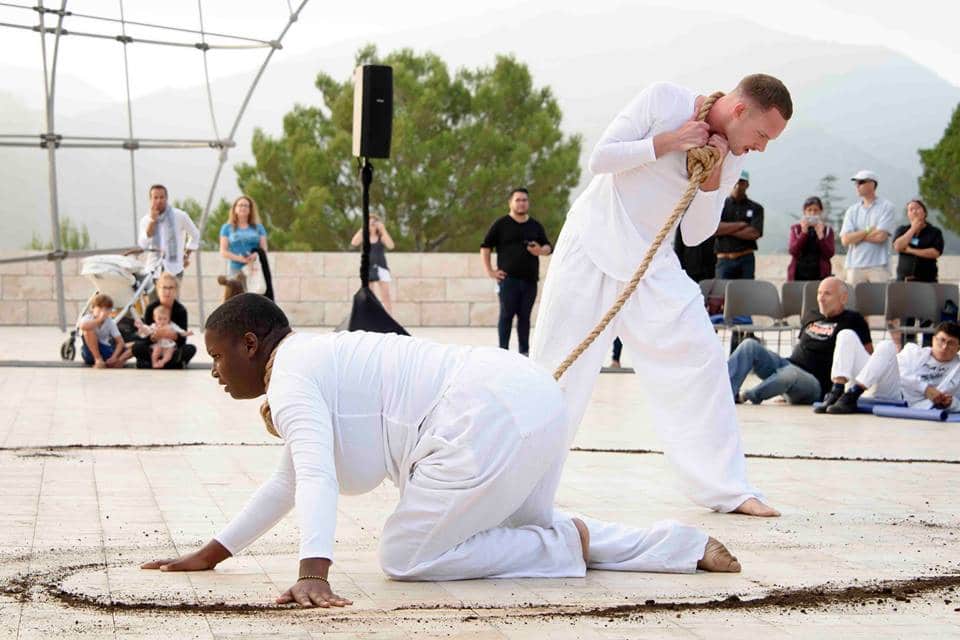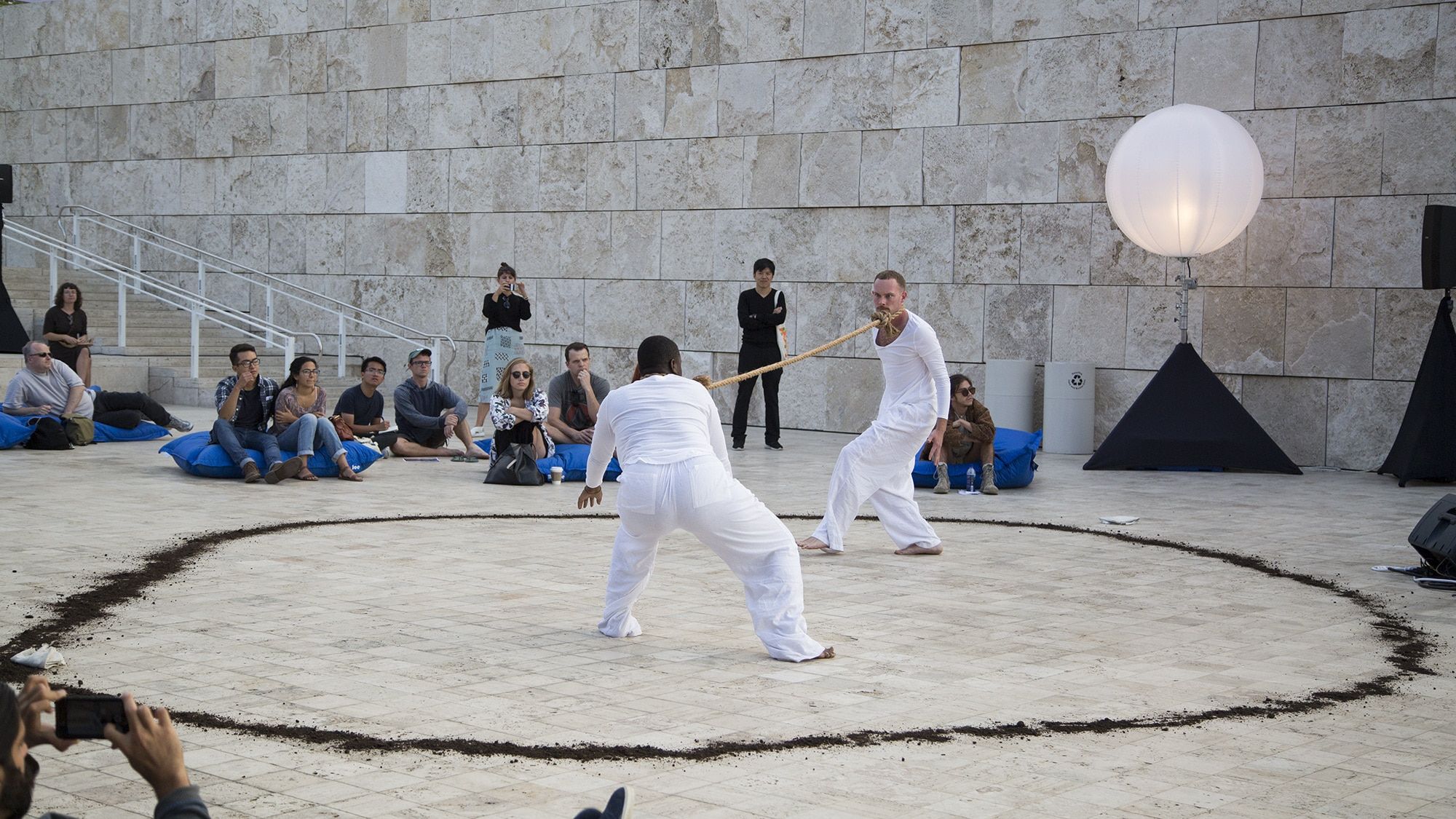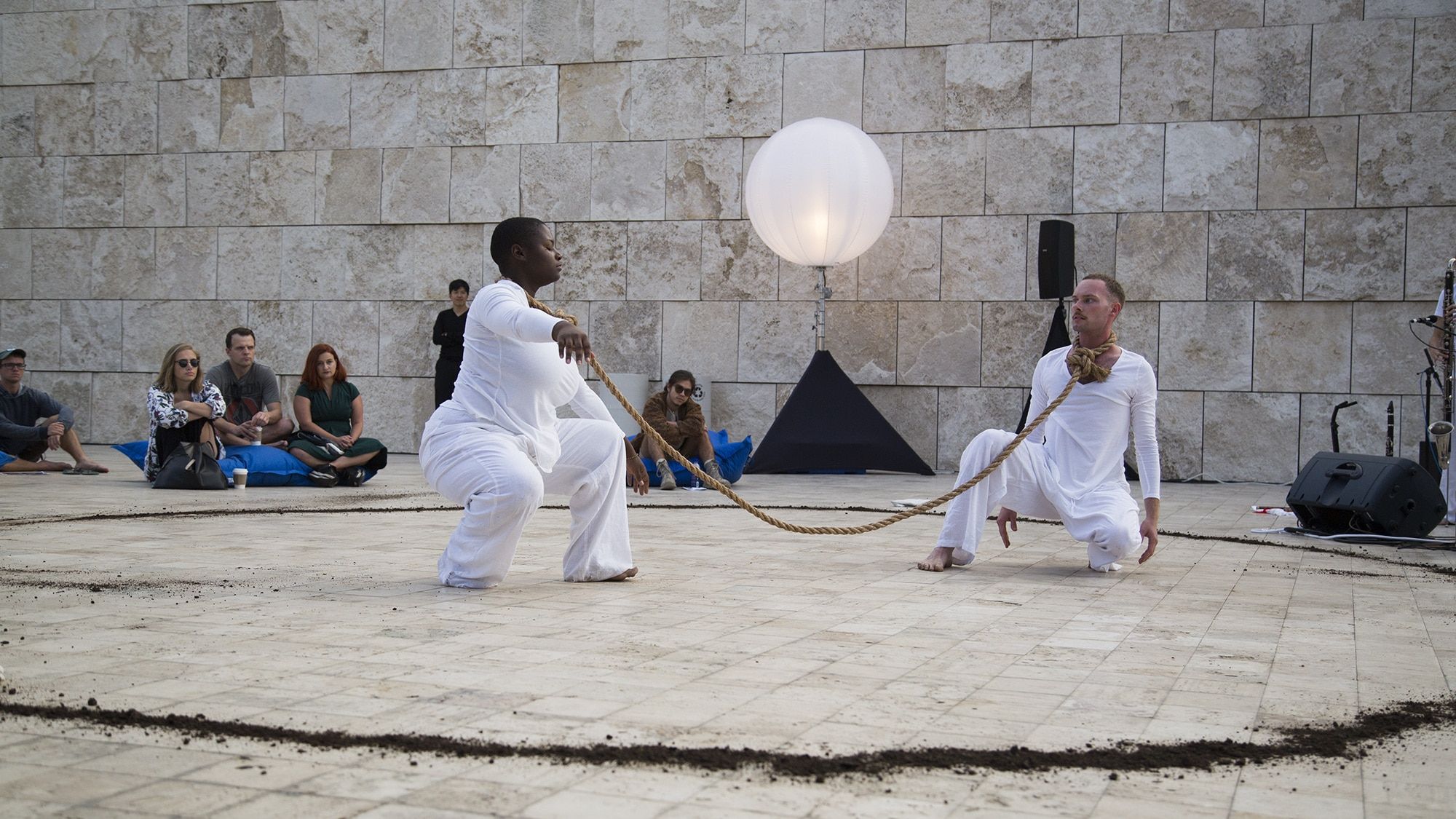My decision to perform this piece with Kenyatta is not about becoming a hero, rather it is about confronting my shame. I don’t write this with a sense of self-importance or to impress for accolades. I do not seek applause. Rather I ask myself: If I am forced to look at my friend Kenyatta with a noose around her neck while I feel that same rope tighten around my own, what do I have to learn? What does this relation offer an audience? What this performance tragically illustrates is the inability to untether the effects of centuries of racial oppression and violence from my peaceful, loving, caring relationship with Kenyatta as a friend, co-teacher, and artistic collaborator. This realization, while difficult to look in the face, humanizes our interaction - it acknowledges the inherent violence of racial construction and the impossibility of us getting out of this mess by using the same tools with which it is built and maintained. As long as white people maintain the noose of racism, the noose, too, will remain around their own necks.
In all my work I look to examples of resistance throughout history. The issues that shape this moment of social uprising are nothing new. The projects of white supremacy, capitalism, patriarchy and imperialism are centuries old. They are implemented in all levels of society and culture. They are protected by the laws that shape our nation. They are imbedded in the language that shapes our psyches. They are enacted by how land is possessed and how access is granted to resources. They are in the very air we inhale as we take our first breath.
What feels different in this moment is the acceleration and scale with which these issues are recognizable, communicated, critiqued, and resisted beyond only marginalized communities. Unregulated capitalism, the economic system that has allowed for 8 billionaires to amass half of the world’s wealth, has offered the masses access to a digital voice found in our smartphone - a different agency than we’ve seen in previous large-scale uprisings (save the Occupy and #metoo movements). That agency can film police brutality, leak incriminating documents, amplify anti-racist tools, coordinate action and inspire a revolution. These actions can happen with an unprecedented immediacy. This technology can also desensitize, but only to a point. A point of being pushed to our physical and mental limits. A point of being fed up. Is now that tipping point?
What we are experiencing in the United States is a moment of uncomfortable introspection resulting from a 3-month lockdown due to a global health pandemic, the largest unemployment since the Great Depression, and a neo-fascist in the White House who maintains his power through a strategy of implementing chaos: a sea of inflammatory Tweets, executive orders, attacks on the press, pivots, gaslighting, photo ops, childish meltdowns, false accusations, daily press conferences, and rallies, all in service of spinning any truth into a lie to distract and protect himself. He has maintained the same methodology his entire professional career. As his lies pile up, it is hard to see past or through them, they block our vision and confuse what’s real, fake, true, or sometimes even a joke. This, coupled with a full-scale attack on democracy and journalism, has propelled us into a post-truth society. When it is nearly impossible to locate the truth, who and what can we trust? The result is an overwhelming sense of anxiety that leads to helplessness. Even for white people. Unlike never before, more white people are disenfranchised due to unemployment and low wages, expensive healthcare and prescriptions, the immediate and long-term effects of the climate crisis, student debt, substance abuse, all set within a culture war between the left and right that further alienates us from each other. As long as our automatic payments keep pumping out from our anemic bank accounts, the 1% are sustained and we, like zombies, result to infighting and exhaustion, only to wake up the next day in search of pennies. With unregulated capitalism performing psychological warfare, the process of dehumanization has finally infected white lives.
To make America great again is a call to return to a time when the majority of white people still had access to the American dream, even if it was only to barely touch it for a fleeting moment. That was a time before there was a 1%. That was a time before democracy was completely held hostage by corporate America. It was a time before technology rendered the industrial workforce obsolete. It was a time before the richest Americans were awarded the steepest tax cuts in history. It was a time when the United States deployed tactical and violent imperialism under the guise of democracy. The problem for the angry, disenfranchised, dehumanized white Americans who are nostalgic for this past is that time, at least the popular conception of time, does not move backward. Perhaps the baby boomers, who hold the majority of positions of authority, are ultimately scared of their mortality; the fact they are entering the last bit of this blessed consciousness, and with that realization, selfishly want more of what they used to have. But it doesn’t exist any more. The over fertilized tree of free market deregulated capitalism dropped too many fruits and polluted the soil, rotting the roots. But they keep looking up, hoping for more fruit instead of looking down to realize the tree will not stand much longer.






